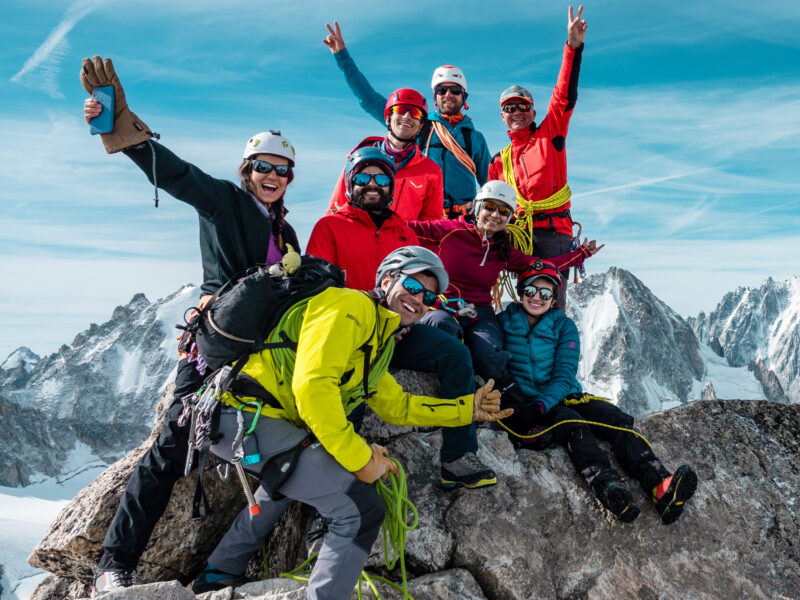BY Rami Rasamny | June 02 2023
A First-Timer’s Guide to Mountaineering Gear

Gear tips for new mountaineers.
This article explores the different options and considerations when purchasing basic mountaineering equipment for the first time. Please refer to the gear list of your specific trip when it comes to quantities or trip-specific recommendations.
Ice Axe
Ice axes come in many shapes and serve different purposes. The single ice axe, also known as a mountaineer’s axe, is used for most mixed mountaineering and expedition routes and is the focus of this article. Double axes used for ice climbing are beyond the scope of this article and are not suitable for most LHO mountaineering itineraries.
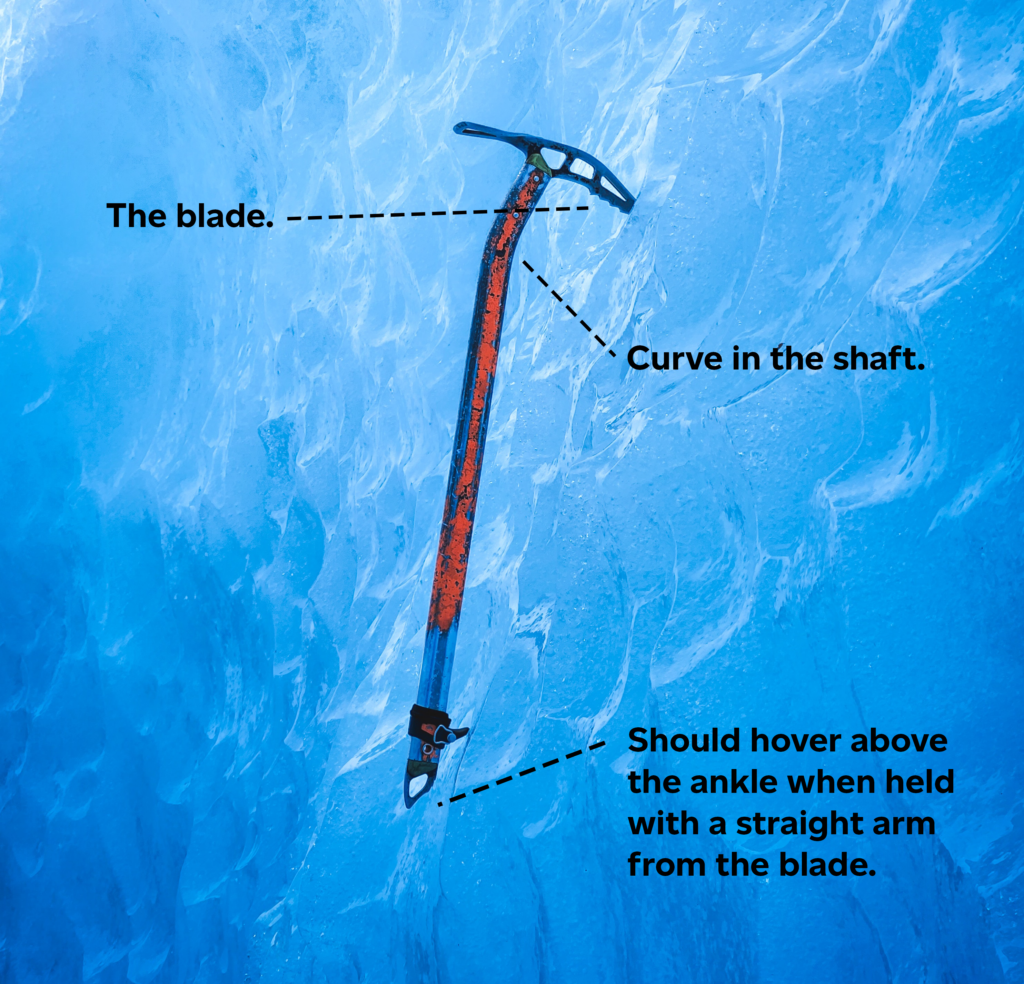
When choosing an ice axe, the two main components to think about are length and weight. The ice axe should be long enough for the end of the shaft to hover slightly above the ankle when held with a straight arm and clenched in your hand from the blade side of the axe. A slight curve in the long shaft is desirable but not mandatory. Axes should be lightweight so that they’re easy to carry, but beware that the lighter the material, the easier it is to damage. The measure of good weight is one that feels comfortable to carry without having to grip too hard or feel fatigued just by carrying it.
Crampons
Crampons are used along with mountaineering boots to enable us to walk comfortably on snow and ice. When choosing crampons, it’s important to know what type is compatible with your boots. There are three types labeled C1, C2, and C3. C1 crampons are compatible with almost any boots and are generally not recommended for any LHO mountaineering trip. C2 crampons are the most common mountaineering crampons and are used for most ascents. C2 crampons are worn by clipping onto a mountaineering boot from the back, similar to an alpine ski binding, and attaching it to a plastic sheath that is pulled over the toe-end of the boot. C3 crampons have a similar clip-on system for the back and a metallic wire at the front to attach the boot on both sides.

Another consideration is the weight. Steel crampons are heavier but last longer. Aluminum crampons are lighter but are not as long-lasting. We recommend a basic steel crampon in the first instance. You can then adapt your future purchases based on your progress in the mountains.
Harness
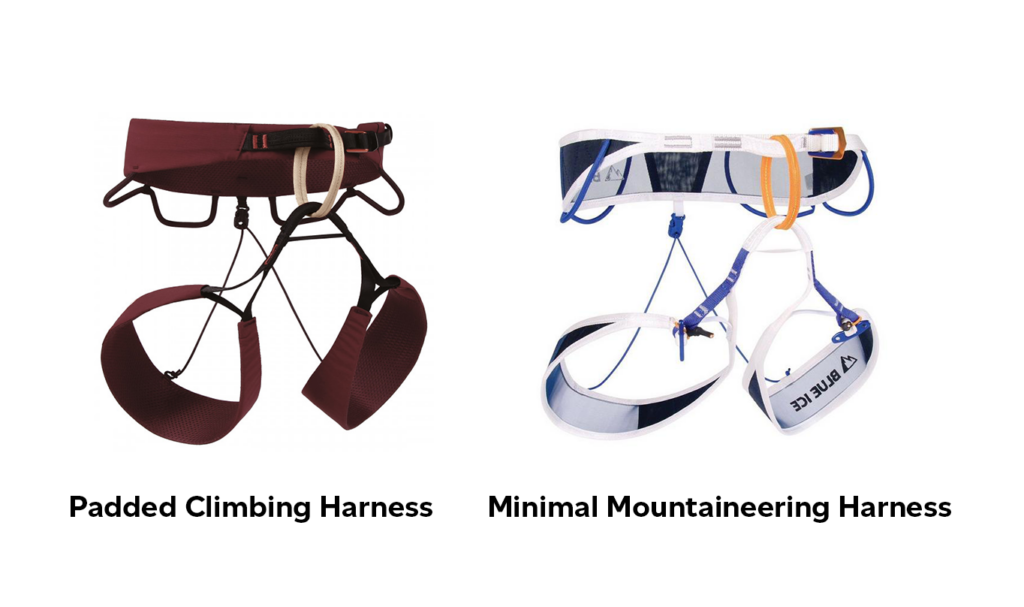
Harnesses are worn to secure ourselves to the rope. Depending on what we primarily use our harness for determines what type of harness to go for. Rock climbing harnesses tend to be more padded because falling is a lot more common in that environment. Mountaineering harnesses are lighter, have less padding, and can be quite minimal because they are used mainly for security and not to regularly cushion a fall. If you already rock climb and have a harness for it, then you don’t need to buy anything new in the initial stages. Once you’ve found your trajectory in mountaineering, you can purchase more specialized gear for that purpose. If mountaineering is your only interest area, then we recommend mountaineering-specific lightweight harnesses.
Carabiners

Carabiners can be used for many reasons, but for the purposes of LHO mountaineering expeditions and courses, they are primarily used to clip into a rope as part of a rope party or used in conjunction with a belay device to assist a partner on a climbing pitch. When purchasing a carabiner, make sure that it has a locking mechanism that is easy to use and that it is designed to carry appropriate weight. The UIAA standard weight test is 20 kN. Bear in mind that this is the weight standard under which the carabiner is expected to fail. In reality, and under most circumstances, we operate well below that force of weight.
Belay Device
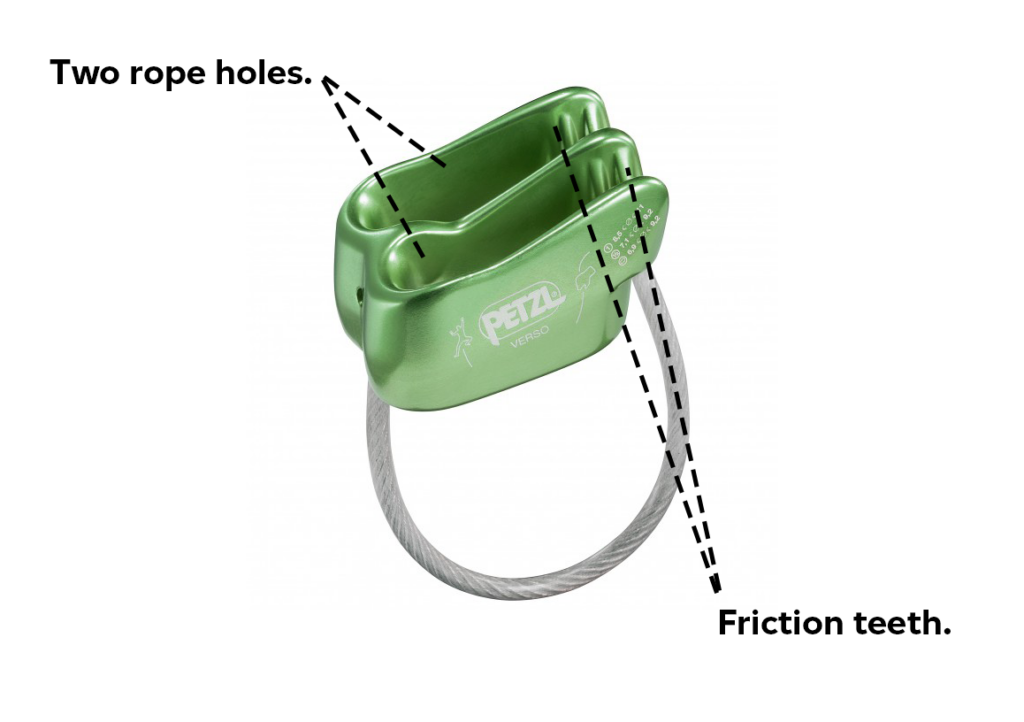
The belay device, also known as an ATC, is used to assist lead climbers and to abseil down steep sections on a fixed rope. Although there are automatic locking belay devices available, these are not appropriate for mountaineering. When purchasing a belay device, ensure that it is a traditional belay device without an automatic lock, that it has two rope holes, and that it has teeth for extra friction.
Helmet
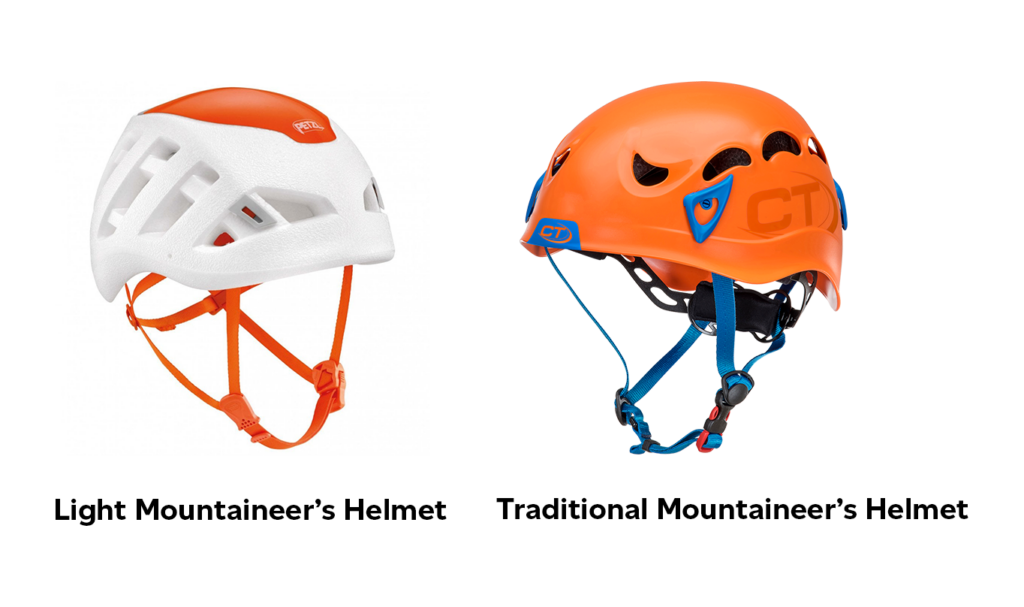
A mountaineer’s helmet should be light, comfortable, and safety-tested. Traditionally, helmets were considered investments that can take multiple hits. These days, however, most mountaineers go for options that are as light as possible, knowing that the helmet may be replaced sooner if it is overused or receives a hard impact. This has become a tradeoff that has led most mountaineers to choose lightness over longevity. When choosing a helmet, we recommend that it is UIAA tested and certified, that it fits well on your head, and that it is as light as you are comfortable with.
Reach Out!
If you have any questions about gear at all, please don’t hesitate to reach out to us.
About The Author
Rami Rasamny is the founder of Life Happens Outdoors, a premium adventure travel community dedicated to transforming lives through curated outdoor experiences. A mountaineer and entrepreneur, Rami has led teams on some of the world’s most challenging peaks, from the Alps to the Himalayas. His mission is to make adventure accessible, transformative, and safe for all who seek to push their limits and Come Back Different.
About Life Happens Outdoors
At Life Happens Outdoors, we believe in the power of nature to transform lives. As proud members of the Adventure Travel Trade Association (ATTA) and the World Travel & Tourism Council (WTTC), our team of certified guides and outdoor professionals is committed to the highest standards of safety, sustainability, and excellence.
Discover more about our story and mission on our Meet LHO page, or explore our curated adventures such as the Tour du Mont Blanc Trek, the Climb of Kilimanjaro, and Chasing the Northern Lights.












